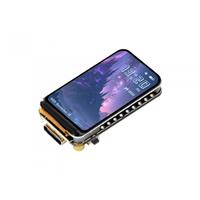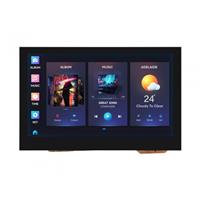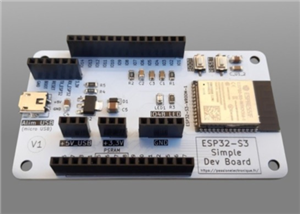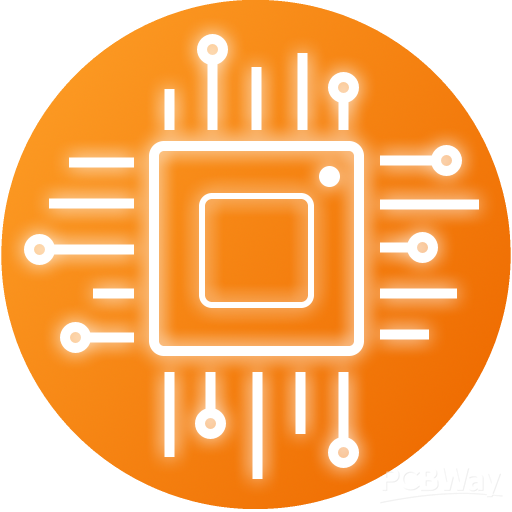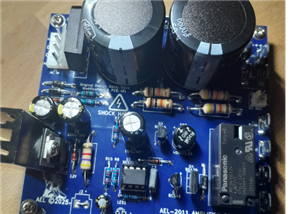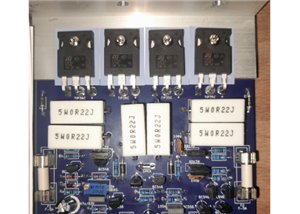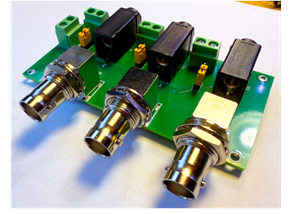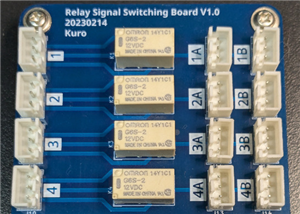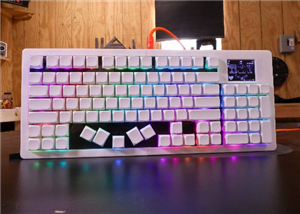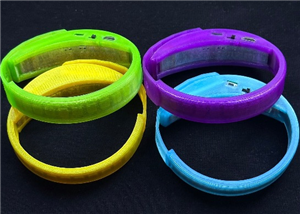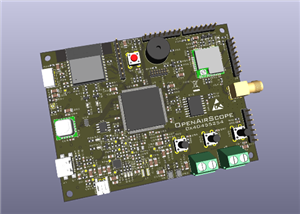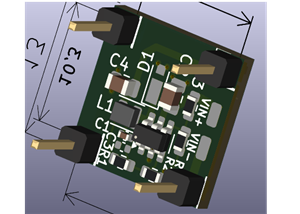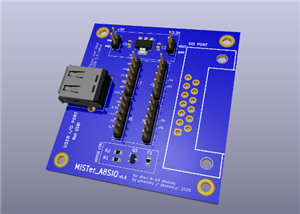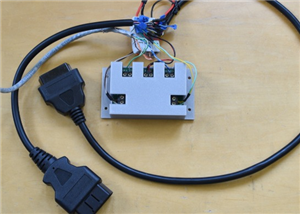
|
Altium DesignerAltium Designer
|
Pi Pico Based Data Acquisition System
Pi Pico Based Data Acquisition System
I'm excited to share a project I've been working on, a compact 8-channel strain gauge data acquisition system designed for use in experimental rockets. This system is meant to measure the loads and forces acting on the rocket during flight, and it's all built around the Raspberry Pi Pico platform.
The Backstory: CLES-FACIL Rocket Club at INSA Lyon
I developed this system for CLES-FACIL, the rocket club at INSA Lyon, where I am an active member. Our club's primary mission is to design, build, and launch experimental rockets. One of the key challenges we face is collecting real-time data during the flight to monitor the performance and structural integrity of the rocket. We rely on strain gauges to measure forces on various parts of the rocket, but we needed a custom, compact solution that would allow us to capture that data while meeting the strict size and power constraints of our rockets.
We are working on a rocket that is only 100mm in diameter, which places very tight limits on how much equipment we can fit inside. Therefore, this data acquisition system needed to be as small and efficient as possible while still providing high-precision measurements.
The Challenge
The rocket's small size meant that every component had to be carefully selected for compactness, weight, and power efficiency. We needed a system that could monitor multiple strain gauges simultaneously, while providing high-quality measurements, and not taking up too much space or adding too much weight to the rocket.
Key Features of the System
- 8 Channel Measurement: The system is capable of monitoring up to 8 strain gauges (or other resistance-based sensors), making it ideal for multi-point force measurement.
- Texas Instruments 24-Bit ADC: The heart of the system is ADS131M08 an 8-channel, 24-bit ADC with adjustable gain (1 to 128) and a sampling rate of up to 32 kSPS. This gives us the precision needed to capture small changes in resistance from strain gauges.
- Excitation Voltage: It provides up to 9V shared excitation voltage for all channels (250mA), which can be adjusted by soldering resistors onto the PCB. Future revisions are planned to support 10V excitation by using a higher voltage non-USB power supply.
- USB Power and Communication: The system is powered via USB, and data is transmitted through the same connection for simplicity and ease of use. In the future, RS-485 support will allow multiple boards to communicate with each other for more complex setups.
- Low-Noise Power Supply: For the power supply, I used the LM27762 Low-Noise Positive and Negative Output Integrated Charge Pump Plus LDO. This setup provides a bipolar power supply to get the nominal voltage output from the Wheatstone bridge around ground level, which is essential for ensuring that the output falls within the input range of the ADC.
Compactness: A Critical Design Goal
The current PCB design is 65mm x 45mm, but the aim is to shrink the system even further in future revisions to fit into the tight constraints of the rocket. By using careful component selection, efficient layout techniques, and a focus on simplicity, this system manages to pack a lot of functionality into a small package.
Design Process and Tools Used
The PCB was designed using Altium Designer. The project uses only components from trusted and established manufacturers to ensure high quality and reliability, which is critical for flight applications. The system also uses a mix of through-hole and SMD components, making it both easy to assemble and cost-effective.
First PCB Assembly
For the initial build, I decided to use the SMD stencil reflow method to solder the components onto the PCB. This process worked well overall, but I encountered a couple of challenges along the way:
I accidentally ordered the wrong LDO (Low Dropout Regulator) for the power supply, so I had to hack another LDO onto the board to get it working. While not ideal, it was a good learning experience.
I also found out that the Raspberry Pi Pico 2 and the original Raspberry Pi Pico are not exactly pin compatible. When I designed the PCB, I was working under the assumption that both models were pin-compatible. However, after soldering a Pi Pico 2 onto the board, I realized that GPOUT1 is not available on pin 13 of the Pi Pico 2, which caused an issue. This was an unexpected surprise, and I’ll need to adjust for that in future revisions.
Images of the Soldered PCB:


What's Next?
Smaller Form Factor: We plan to make future revisions even smaller to ensure the system fits within the rocket's constraints.
Excitation Voltage Control: Future versions will feature a DAC for more precise control over the excitation voltage.
Networking Multiple Boards: We're looking at adding RS-485 for networking multiple boards together, which would allow us to monitor more channels and share data between several units.
The Strain Gauge Setup
The project uses strain gauges arranged in a Wheatstone bridge configuration, a classic setup for measuring small changes in resistance. The goal is to capture the forces acting on the rocket during flight to gather critical performance data.
Power Supply Design
To ensure accurate and stable measurements, I used a bipolar power supply. This was necessary to get the Wheatstone bridge’s nominal voltage output around ground level, which is within the input range of the 24-bit ADC. The LM27762 charge pump was chosen because of its low-noise characteristics, ensuring that the system’s performance is not affected by power supply noise.
Software
The software is very much in the works at the moment. I'm currently focusing on getting the basic functionality up and running, including sensor readings and initial data transmission via USB. Once the basic functionality is stable, I'll be moving on to adding more advanced features such as RS-485 communication for networking multiple boards and data compression for efficiency.
Future Revisions
- 10V Excitation: Planned support using a higher voltage non-USB power supply.
Note: 10V excitation will require a power supply of more than 5.5V.
- RS-485 Networking: Add support for 10 Mbps communication via RS-485, allowing multiple boards to be connected together. This will require overclocking the Raspberry Pi Pico to 160 MHz.
- USB Type-C Connectors: Replace JST-XH connectors with USB Type-C for their smaller size and affordability (USB 2.0 cables available for as low as $0.30). USB Type-C will also be used for RS-485 communication.
- Power Supply: Future revisions will likely be powered by 12V or 24V sources, as each board requires up to 10W for the excitation voltage.
- Excitation Voltage Control: For future revisions, I plan to make the excitation voltage adjustable using a DAC for more precise and programmable control.
What's in the Works
The design is still evolving, and we're focused on getting a stable and functional version working for the rocket launch. In the near future, I'll be adding the ability to network multiple boards together via RS-485, enabling a larger sensor array and more comprehensive data collection.
Conclusion
This project is an exciting step in integrating real-time strain gauge measurements into an experimental rocket platform, and we’re thrilled to see it come to life. If you want to follow the progress or contribute, check out the GitHub repository where I’ll be posting updates, schematics, and future design iterations.
Let me know if you have any suggestions, feedback, or questions in the comments below!
Thanks for reading!
Bogdan Seczkowski
INSA Lyon, CLES-FACIL Rocket Club
Pi Pico Based Data Acquisition System
*PCBWay community is a sharing platform. We are not responsible for any design issues and parameter issues (board thickness, surface finish, etc.) you choose.
- Comments(0)
- Likes(2)
-
 Sergio Oliveira
Jun 18,2025
Sergio Oliveira
Jun 18,2025
-
 Electronic Adam
Jun 15,2025
Electronic Adam
Jun 15,2025
- 1 USER VOTES
- YOUR VOTE 0.00 0.00
- 1
- 2
- 3
- 4
- 5
- 6
- 7
- 8
- 9
- 10
- 1
- 2
- 3
- 4
- 5
- 6
- 7
- 8
- 9
- 10
- 1
- 2
- 3
- 4
- 5
- 6
- 7
- 8
- 9
- 10
- 1
- 2
- 3
- 4
- 5
- 6
- 7
- 8
- 9
- 10
-
10design
-
10usability
-
10creativity
-
10content
 More by Bogdan Seczkowski
More by Bogdan Seczkowski
-
-
AEL-2011 Power Supply Module
553 0 2 -
AEL-2011 50W Power Amplifier
512 0 2 -
-
-
Custom Mechanical Keyboard
710 0 0 -
Tester for Touch Screen Digitizer without using microcontroller
340 2 2 -
Audio reactive glow LED wristband/bracelet with NFC / RFID-Tags
322 0 1 -
-
-



















